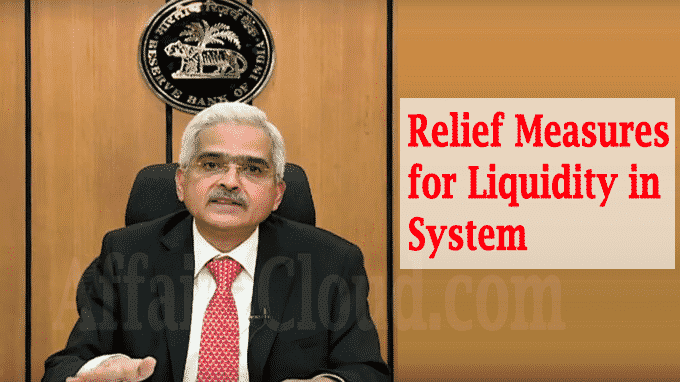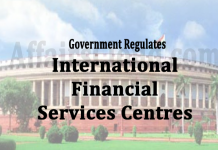On April 17, 2020, Reserve Bank of India (RBI) Governor Shaktikanta Das announced much-needed relief measures for small and medium-sized financial organisations which have been struggling to operate in the wake of the Covid-19 pandemic, during a press conference in New Delhi. These are a part of a stimulus package announced by the central government to support such smaller businesses, which often borrow from Non-Banking Financial Companies (NBFCs) and Micro finance Institutions (MFIs).
- Already, RBI has pumped Rs 1.2 lakh crore of fresh currency into the system in the last 45 days since the COVID-19 outbreak in the country.
Here is the complete overview of relief measures:
RBI slashed Reverse Repo rate by 25 bps to 3.75% from 4%; repo rate remained unchanged
It has been decided to reduce the fixed reverse repo rate under liquidity adjustment facility (LAF) by 25 basis points (bps) from 4% to 3.75% with immediate effect to maintain more liquidity in the banking system.
- The reverse repo rate is the rate at which central bank of a country (Reserve Bank of India in case of India) borrows money from commercial banks.
- This will encourage banks to lend to the productive sectors of the economy.
- On the other hand, repo rate remained unchanged to 4.40%, but it could be reduced as inflation is likely to fall below its target in a couple of months.
Following table shows the Policy Rates of RBI as of April 17, 2020
[su_table]
| Policy | Rate | Rate Change |
| Repo Rate | 4.40% | No change |
| Reverse Repo Rate | 3.75% | 25 bps |
| Marginal Standing Facility (MSF) Rate | 4.65% | No change |
| Bank Rate | 4.65% | No change |
[/su_table]
Inflation could fall below 4% target by RBI in H2 FY21
The lockdown to contain COVID-19 spread has posed a serious challenge to the demand of the economy. The inflation could further decline below the central bank’s 4% target by the second half of this fiscal (H2 FY21). RBI has set a mid to long term inflation target at 4% with a bias of 2% on either side.
- The consumer price index based retail inflation has fallen by 170 bps from its January 2020 peak.
- The retail inflation for March fell to a four-month low of 5.91% on cheaper food articles.
TLTRO 2.0 worth Rs 50,000 cr announced; Banks exempted from paying dividends
RBI will conduct a second round (TLTRO 2.0) of targeted long term repo operations (TLTRO) for an initial amount of Rs 50,000 crore that will help in refinancing NBFCs and MFIs to maintain cash flow to the small and medium enterprises (SMEs). TLTRO is a tool under which the central bank provides one-year to three-year money to banks at the prevailing repo rate. This stimulates bank lending which leads to efficient liquidity in the economy.
- Atleast 50% of this TLTRO amount will go to small sized NBFCs and MFIs as TLTRO 2.0 is specifically for smaller finance organisations unlikely earlier TLTRO scheme which mostly helped public sector undertakings (PSUs) and large corporations.
- These investments must be made within 1 month of RBI auctions.
- Apart from above, RBI also exempted banks from making dividend payment in the light of financial difficulties posed by COVID-19 pandemic.
Refinancing NABARD, SIDBI & NHB with Rs 50,000 crores
A special refinance facility for an amount of Rs 50,000 crores will be provided to premier financing institutions that will further help in refinancing small and medium finance institutions to lend money smoothly to businesses. The funding divided as follows:
- Rs 25,000 cr for National Bank for Agriculture and Rural Development (NABARD)
- Rs 15,000 cr for Small Industries Development Bank of India (SIDBI)
- Rs 10,000 cr for National Housing Bank (NHB)
Other Important Highlights:
–Liquidity Coverage Ratio (LCR) requirement for scheduled commercial banks (SCB) brought down from 100% to 80% with immediate effect to help banks maintain sufficient high-quality liquid assets in the wake of the economic crisis.
- LCR is the bank’s liquidity risk profile. Banks maintain an adequate stock of unencumbered high-quality liquid assets that can be easily and immediately converted in financial markets, at no or little loss of value.
-Banks will need to maintain additional provisioning of 10% on standstill accounts.
–60% of ways and means advances allowed to states until September 30, 2020.
- A ways and means advance is a mechanism used by RBI to meet mismatches in the receipts and payments of the government and states. In this regard, RBI gives temporary loan facilities to the centre and state governments as a banker to the government.
–90-day NPA norm will now not apply to the moratorium granted on existing loans by banks.
-Loans given by NBFCs to real estate companies to get similar benefit as given by scheduled commercial banks.
-NBFCs’ loans to delayed commercial real estate projects can be extended by a year without restructuring.
-NBFCs allowed granting relaxed Non-performing asset (NPA) classification to their borrowers.
RBIs decisions powered by 4 key areas
The above decisions made by RBI focused on four key areas to ease pressure on banks and businesses in the country. These are:
- Maintaining adequate liquidity in the system
- Facilitating and incentivising healthy cash flow from banks
- Easing the overall financial stress
- Enabling formal working of markets
Point to be noted:
Indian currency already depreciated by 7% Year-To-Date (YTD) as rupee fell 0.55% to a new record low of 76.86 against the US dollar. If currency depreciates further by 3% then the Indian government may have to pay 4.3 lakh crore Rupees as an additional Interest in their foreign borrowings which amounts to approximately 1.8% of our Gross Domestic Product (GDP).
About Reserve Bank of India (RBI):
Headquarters– Mumbai, Maharashtra
Formation– 1 April 1935
Governor– Shaktikanta Das
Deputy Governors– 4 (Bibhu Prasad Kanungo, Mahesh Kumar Jain, Michael Debabrata Patra, one is yet to be appointed).




